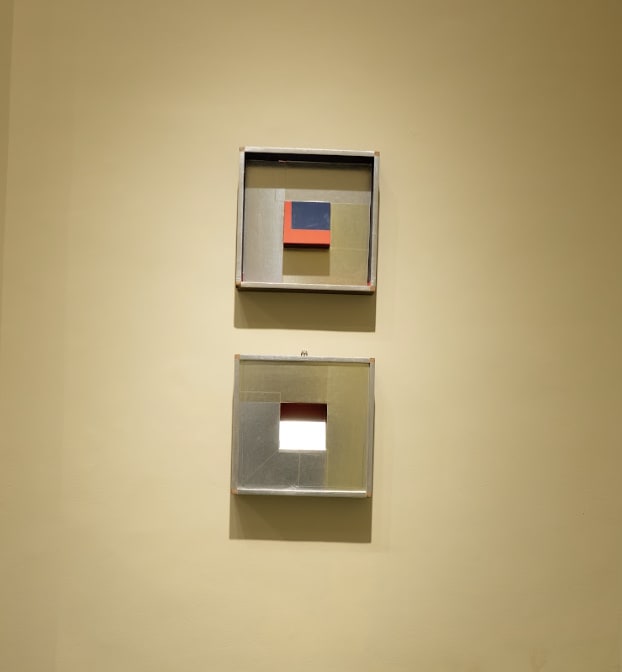VIEW ARTICLE
VIEW PDF
A new exhibition drawn from Saloni Doshi’s private collection highlights the exploration of silence, memory, and the power of the void through South Asian non-figurative art.
In a city defined by its frantic pace and constant visual clutter, finding space for genuine contemplation feels radical. The newly opened exhibition, "Presence of Absence," at the Space118 Art Foundation in Mazgaon, is drawn entirely from the personal collection of Saloni Doshi and curated by interior architect Kunal Shah. It is a rare moment where one of the city’s significant private collections becomes public, offering works of abstract and non-figurative art from South Asia. It is an exploration of silence, memory, and the power of the void, also featuring prominent names such as Viswanadhan, M Krishna Reddy, Mehlli Gobhai and Dashrath Patel.
The exhibition’s central preoccupation is the artistic language of absence, a theme Doshi explores through works that deal with erasure, silence, and the unseen. “My deep engagement with this aesthetic was sparked by acquiring her first Zarina, one of the late maps from the series, The Cities I Call Home. The work, a meditation on memory and belonging, became a pivotal point, especially when she refers to the poet, Mahmoud Darwish, when he mentions, ‘He does not have enough time to tie his end to the beginning and the presence of how deeply art and memory intertwined,’” shares Doshi.
For her, this idea of the void is not merely theoretical; it is a lived experience. She notes that the importance of absence often only registers when the relentless noise finally subsides. The collection deliberately expands the conventional perception of abstraction and asks the viewer to revel in that absence and focus entirely on the elements that remain. The focus on the subtle vocabulary of abstraction, on how even a small swatch of colour can evoke a profound feeling, is a call to step away from narrative art and embrace the rich history of abstraction that the subcontinent offers. The works selected by Doshi demonstrate the vastness of this language across mediums and eras.
Displacement, in the city
The exhibition’s aesthetic choices are deeply connected to the geography and history of its host city. “I view Mumbai itself as a city of abstraction — a place where calm and chaos coexist every day. India has historically favoured narrative and figurative art, but Mumbai has long been the home and inspiration for pioneering abstract artists, beginning with the Bombay Progressives like VS Gaitonde, SH Raza, and Akbar Padamsee, and continuing with artists such as Nasreen Mohammedi and Laxman Shrestha,” mentions Doshi.
This focus on abstraction also allows the exhibition to tap into universal themes of homeland, displacement, and belonging. Many of the works engage with the idea of a space left behind or a memory rendered in form and colour.
Artist’s mentality
“My approach to collecting is not driven by names or a herd mentality. Instead, it is built on a deep curiosity about the artist’s process and the fundamental question of ‘why’ they create,” emphasises Doshi.
The Presence of Absence was the desire to expand the perception of abstraction. Doshi also mentions how she wanted to talk about what abstraction is without emphasising what it is not. “We often describe it as the absence of the figure, but I wanted viewers to revel in that absence and rediscover lines, grids, textures, and colour. Even a small swatch of colour can move you when you spend time with it.”
AT Space 118, Kirti Warehouse, J Rathod Marg, Mazgaon.
LOG ON TO space118.com
EMAIL salonidoshicollection@gmail.com (viewing by appointment only)
FREE
